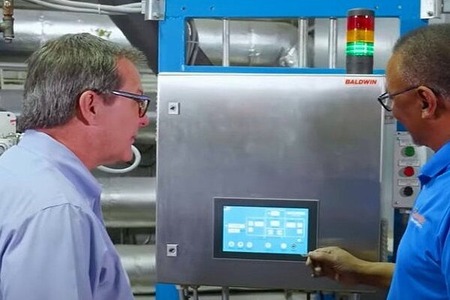
Stakeholders propose change in tactics to raise Nigerian textile industry performance
YarnsandFibers News Bureau 2014-02-03 11:00:00 – NigerianTo up lift the Nigerian textile industry out of the woe will involve change of tactics by operators and government. Constant placing of blame at the doorsteps of government by operators without changing business tactics and models to suit international standards cannot uplift the textile sector proposed Stakeholders in the private sector.
On the other hand, they are of the opinion that government’s inclination to sink money into sector, without conscious efforts to improve infrastructure, will only amount to waste of funds and resources.
The Nigerian textile industry, a previously virile industry with over 180 textile mills by 1985, and over 500,000 direct and indirect jobs, has had its fortunes reversed in recent times, with only 34 companies surviving at the moment.
According to information obtained from the Nigerian Textile Manufacturers Association of Nigeria (NTMAN), the industry’s problem began in early 1990s, when massive smuggling and high production costs were the order of the day, and worsened in 1997, when ban on textiles were finally lifted.
The Nigeria Customs Service (NCS) shows textile fabrics and yarn, excluding lace fabrics, Georges and few others, are in the Import Prohibition List, meaning they cannot be imported. However, stakeholders say the problem with the sub-sector goes beyond ban.
A top economist who works for Nigerian government, who does not want his name in print, told BusinessDay that most textile manufacturers want government to ban all forms of textiles, but in that case, will they be able produce clothes to wear. Also fails to understand the reason which is stopping them from collaborating with foreign partners to reduce production costs and beat Asian imports.
The main problem is not imports but smuggling, but what else will government do for them to make them improve.
Most successful businesses world over have adopted surviving tactics in difficult environments. Many of these tactics revolve around innovations such as better packaging, improved technology and industry concentration, among others. Some stakeholders think that part of the problem in the industry is inability of operators to move with the ever-changing world.
The problem with the textile industry is partly lack of innovation. Competition is part of business. This is like a football game where each club comes up with ideas to beat competitors. No single country has the best business environment, but each tries to come up with new ideas to move on. Now, what is the quality of cotton, yarn or textiles they manufacture?’’ Eloka Ifejika, CEO, Elokanar Investment, told BusinessDay in an exclusive interview
But few other stakeholders disagree. Paul Jaiyeola Olarewaju, director-general, Nigeria Textile Manufacturers Association (NTMAN), exclusively told BusinessDay in a telephone interview that the problem was beyond change of tactics.
The major problem is the influx of foreign textiles into the country. This is killing the industry. As at today, over 80 percent of textiles in the country are imported, though it is still under ban, it’s still smuggled.
Another reason for under-performance in the industry is that government uniformed agencies do not patronise the industry. Government often gives out contracts to people who go abroad and import the uniforms. This kills this industry. They also have the problem with the black oil which is scarce in the North.
The Federal Government, in order to resuscitate the industry, introduced the N100 billion Cotton, Textile and Garment (CTG) Fund, which began operational during late Musa Yar’Adua’s regime. This Fund was entrusted on the Bank of Industry (BoI), which issues it to operators at about 6 percent interest rate. About 60 percent of the Fund has been disbursed, according to BoI.
The funds are not even enough to resuscitate three textile industries. The main problem is energy. Pumping billions into an outdated machine, the money will sink. If the energy problem is not fixed, the money will only be wasted as not many companies can run on generators
Market Intelligence
Ask for free sample Report

experience
Customer Base
dedicated team
Countries Served Worldwide









